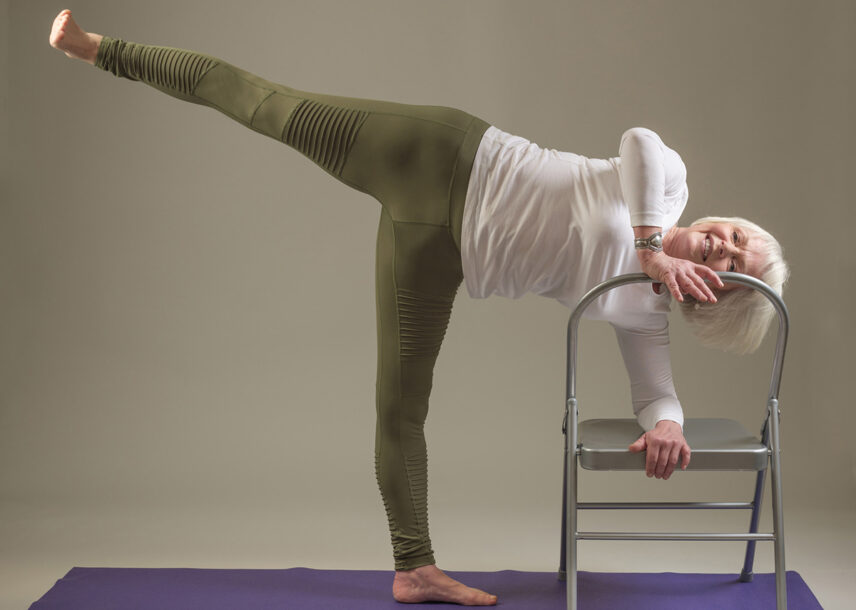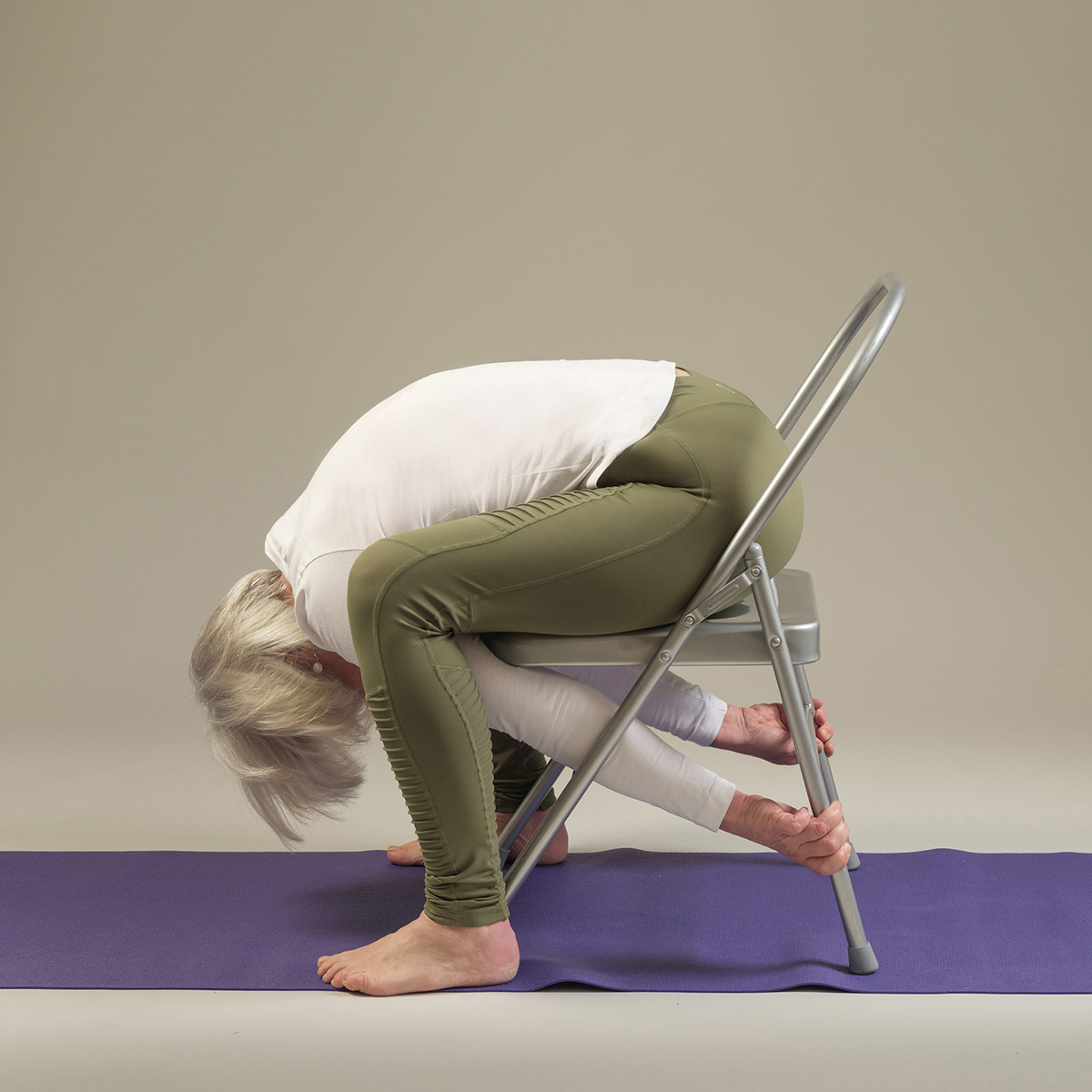Explore the first of a series of yoga prop guides from sisters Rachel and Hannah Lovegrove. The two inspiring women both learned yoga as teenagers from their mother, before they trained and qualified as certified Iyengar Yoga teachers and have now both been teaching yoga for over 20 years. We are so excited to launch a series of 8 blogs, each a definitive guide with exciting ways and tips to use your favourite props and we start off with the most versatile of props with lots of hidden wonders, the Yoga Chair.
The yoga chair is a modified version of the classic folding metal chair. Made of smooth tubular steel, it comes in two heights, with either two bracing bars at the back or one between the front and back legs. They can also have two small holes in the front seat to attach a back bender. Yoga chairs are strong and can take up to 100kg in weight. The forward slant of the front legs makes them very stable, compared to standard chairs with vertical front and back legs. Explore our range of Yoga Chairs and Feet Ups at Yogamatters.
What is a Yoga Chair used for?
Most people come across chairs in studios and of all the props, they are the least likely to be found at home – a great pity because they are so hugely useful.
Support
If your legs are stiff or weak, holding the back of the chair allows you to extend your legs in standing poses while the weight of your upper body is taken by the chair. If you have any difficulty getting down and up from the floor, a chair is a very stable and useful prop to have around.
Security
To overcome the fear of falling, the stability of the chair makes it ideal for practising balance poses. For example, you can use the seat for your front elbow and hand, and the chair back for your top hand in Ardha Chandrasana (Half Moon Pose) – image above.
Extension
Try resting your head on the seat while extending your legs and arms in seated forward bends.
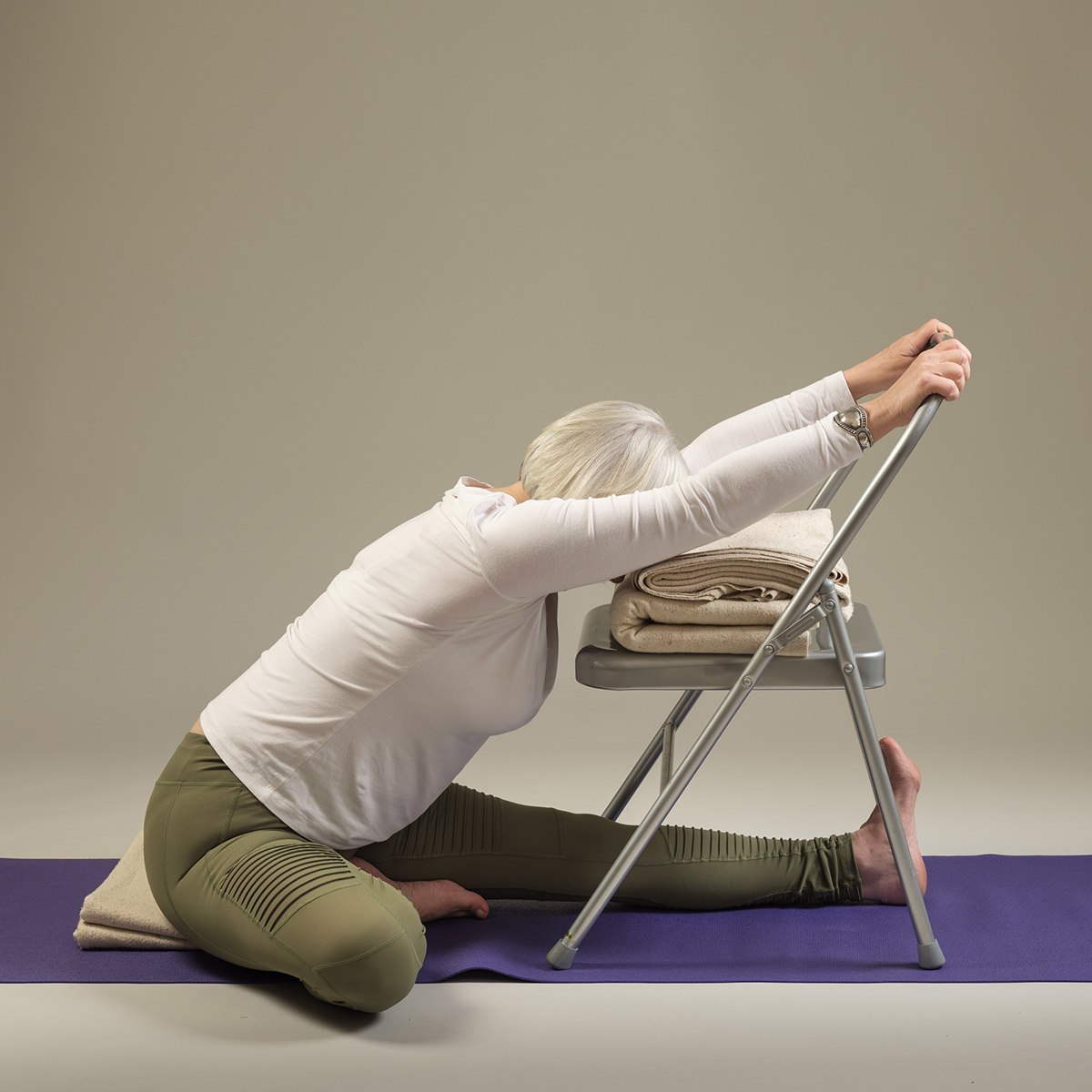
Or gripping the seat and extending away from it in Adho Mukha Svanasana – you can even use the chair upside down for this.
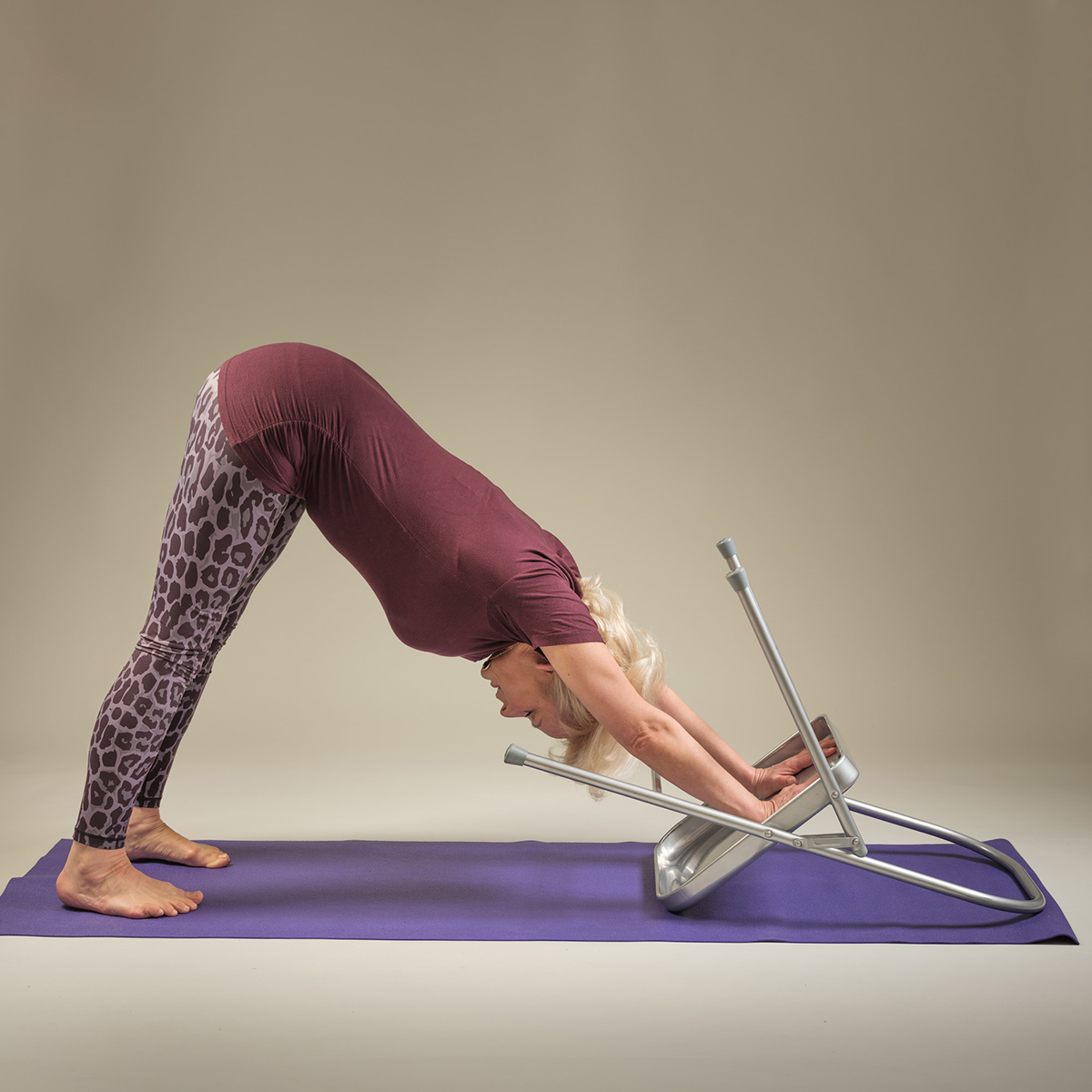
Relaxation
Resting your lower legs over the seat of the chair can be very beneficial for lower back pain, tightness in the hips, shorter hamstrings and painful knees.
Resistance
In order to learn a particular movement or shape, sometimes your body needs a framework. For instance, to understand how to open your chest and curve your spine in Viparita Dandasana, try using the edge of the seat to resist into your shoulder blades.
Bracing
One of the simplest actions on the chair is the seated twist Bharadvajasana, using the back bar of the chair to brace your hands against. Or sitting on the edge of the chair, bring your trunk down between your knees into Kurmasana and grip the back legs of the chair. Your hands are braced on the chair and feet braced on the floor to create more movement in your spine and hips.
Rehabilitation
After injury, during the recovery period, if you feel weak or need extra protection, the chair allows you to modify many poses and practise them easily and safely.
A Yoga Chair for Backbends
There are several ways to use the chair for backbends which gives everyone a chance to benefit from these demanding poses safely and without fear.
Viparita Dandasana (Inverted Staff Pose)
The chair is extremely useful at each stage, from learning to take the head back in the pose, through to developing the curve and finally taking your head to the floor. In the most basic version, the chair is used to support the spine from the tailbone to the shoulder blades, allowing the top shoulders, neck and head to release back and down. This teaches us where to work and where to release.
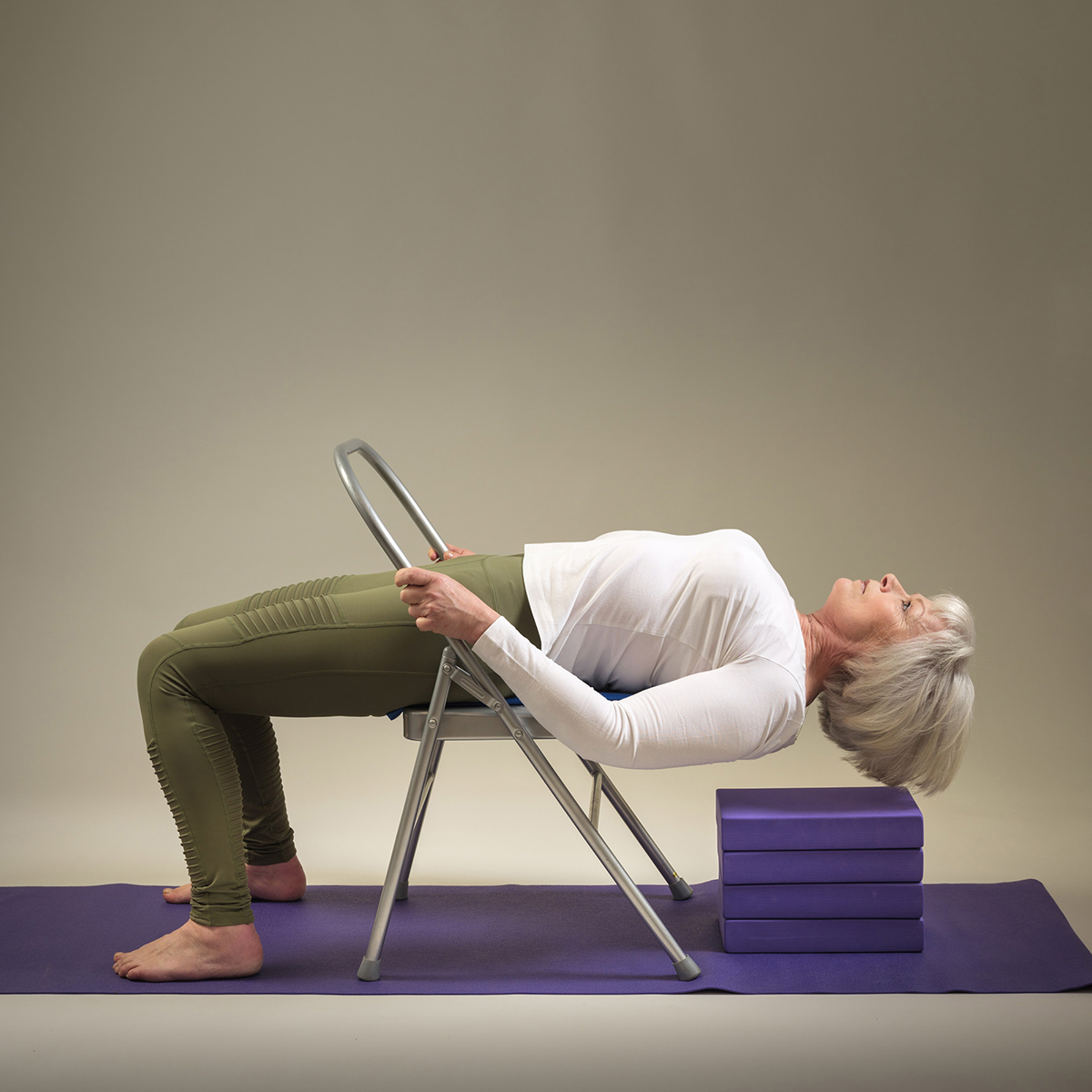
Fold a yoga mat in four and place over the seat of the chair. Sit facing the back of the chair, taking your legs through the back bar and place both feet on the floor. Slide your bottom towards the back of the chair until your tailbone is just coming off the edge, then lift your chest well and lie back onto the seat. You should feel fully supported by the chair at this point, even though the head and shoulders are free.
Have the feet parallel and planted firmly onto the floor – if feet don’t easily reach the floor, use a block under each foot to give stability. Using the edge of the seat as a guide, slide an inch back, allowing the chair to ‘fix’ your shoulder blades in position: your chest will lift and open more, your spine will curve, and your head will tip back until the crown is facing the floor. If you feel the need to support your head, have a blocks or a bolster to take your head onto.

If you are comfortable, thread your arms through the legs of the chair to catch the back chair legs. If you can’t reach the back legs, you may have come too far off the chair. Bend your legs, come up and try again.
Urdhva Danurasana – Upward Face Staff Pose
Place your chair about four feet from a wall, with the seat facing the wall, and set yourself up as for the previous pose. As you progress, you can put bricks on the floor against the wall, as shown.
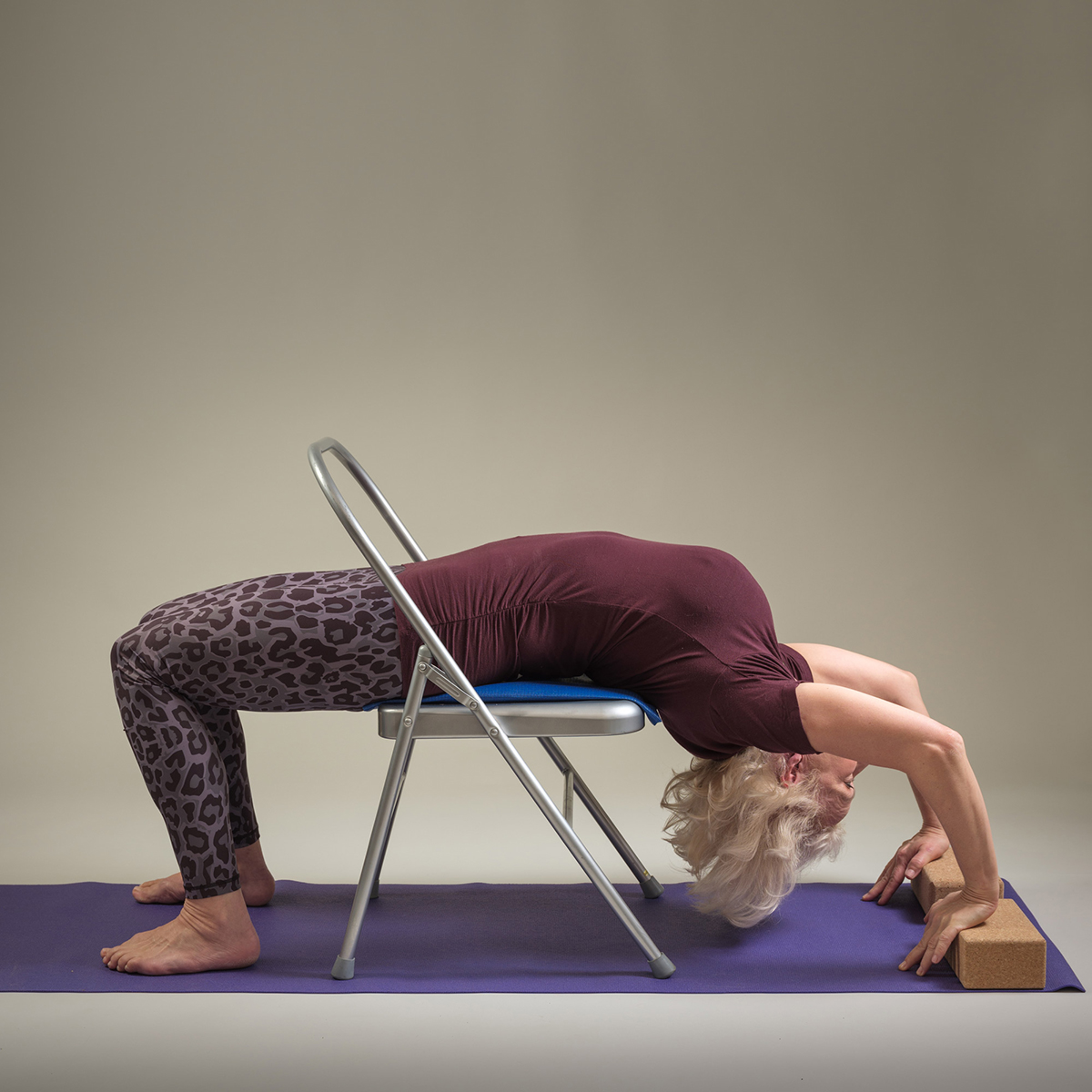
Have your feet hip-width and parallel, press them well into the floor and roll your front thighs in to keep your knees level. (If feet don’t easily reach the floor, use a block under each foot for stability.) Lift your chest, take your head back, release your hands and swing them up and over and see if you can walk your hands down the wall to the bricks. Adjust and find out what works for you. If you feel able, press your feet down, press your hands into the wall or bricks and try to lift yourself up.
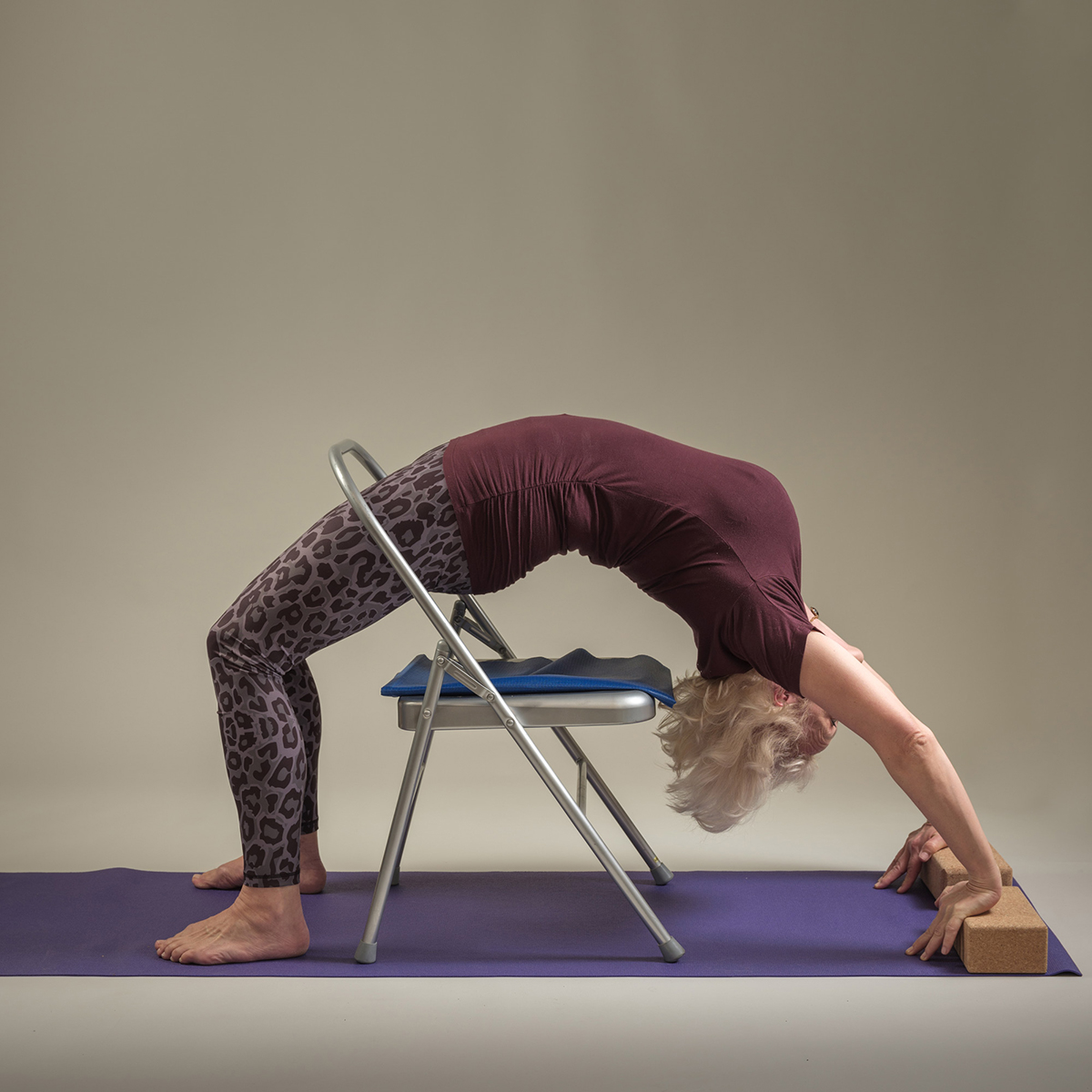
Fun fact:
Persisting in poses where fear is causing tightness and restricted breathing causes problems, so think of the chair as your friend, the prop you turn to when you need to ‘let go of the fear’. By turning the chair round or upside-down, by adding blankets, blocks and bolsters, you have a huge variety of heights and shapes to work with. While you’re clinging to your chair, your body – skin, muscles, organs and breathing – can release and soften. This is when the fear is released, and freedom comes.
Credits:
Rachel lives in Southampton and runs Orange Tree Yoga. Hannah lives in Dorset where she runs classes and workshops and has her own natural skincare range – Lovegrove Essentials.
For information about up-coming workshops covering the use of props please email : admin@orangetreeyoga.com.
Photos: Damien Lovegrove
Hair & Make Up: Hayley de Beers
All images and text © Rachel Lovegrove, Hannah Lovegrove 2019.


